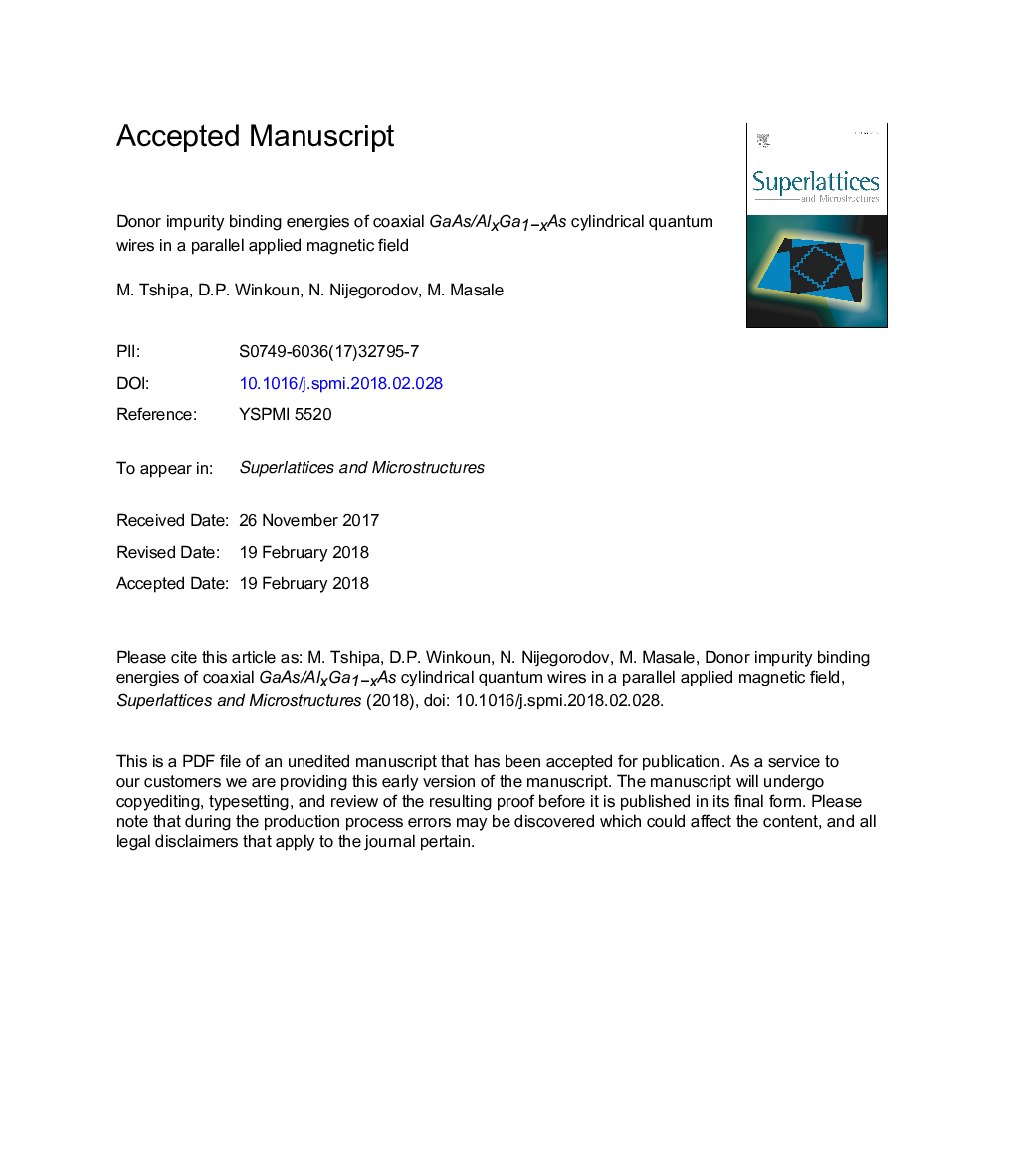| Article ID | Journal | Published Year | Pages | File Type |
|---|---|---|---|---|
| 7938993 | Superlattices and Microstructures | 2018 | 24 Pages |
Abstract
Theoretical investigations are carried out of binding energies of a donor charge assumed to be located exactly at the center of symmetry of two concentric cylindrical quantum wires. The intrinsic confinement potential in the region of the inner cylinder is modeled in any one of the three profiles: simple parabolic, shifted parabolic or the polynomial potential. The potential inside the shell is taken to be a potential step or potential barrier of a finite height. Additional confinement of the charge carriers is due to the vector potential of the axial applied magnetic field. It is found that the binding energies attain maxima in their variations with the radius of the inner cylinder irrespective of the particular intrinsic confinement of the inner cylinder. As the radius of the inner cylinder is increased further, the binding energies corresponding to either the parabolic or the polynomial potentials attain minima at some critical core-radius. Finally, as anticipated, the binding energies increase with the increase of the parallel applied magnetic field. This behaviour of the binding energies is irrespective of the particular electric potential of the nanostructure or its specific dimensions.
Related Topics
Physical Sciences and Engineering
Materials Science
Electronic, Optical and Magnetic Materials
Authors
M. Tshipa, D.P. Winkoun, N. Nijegorodov, M. Masale,
